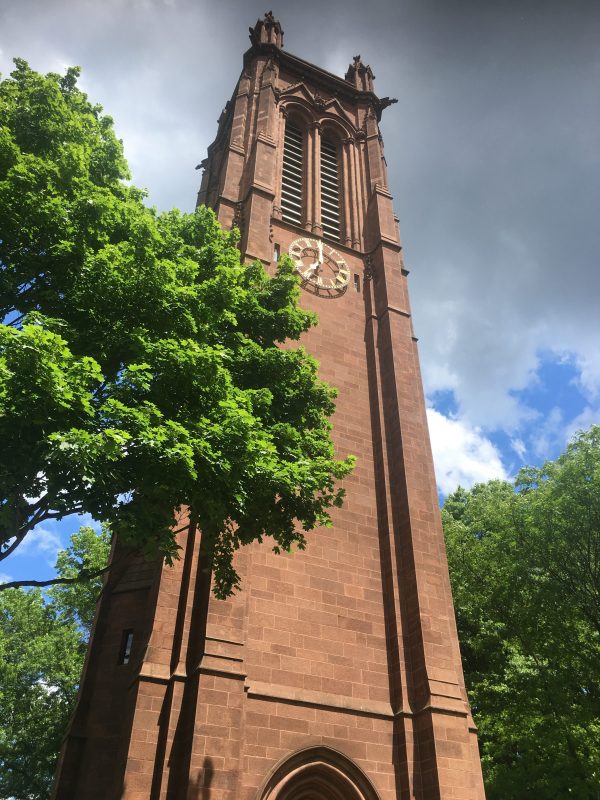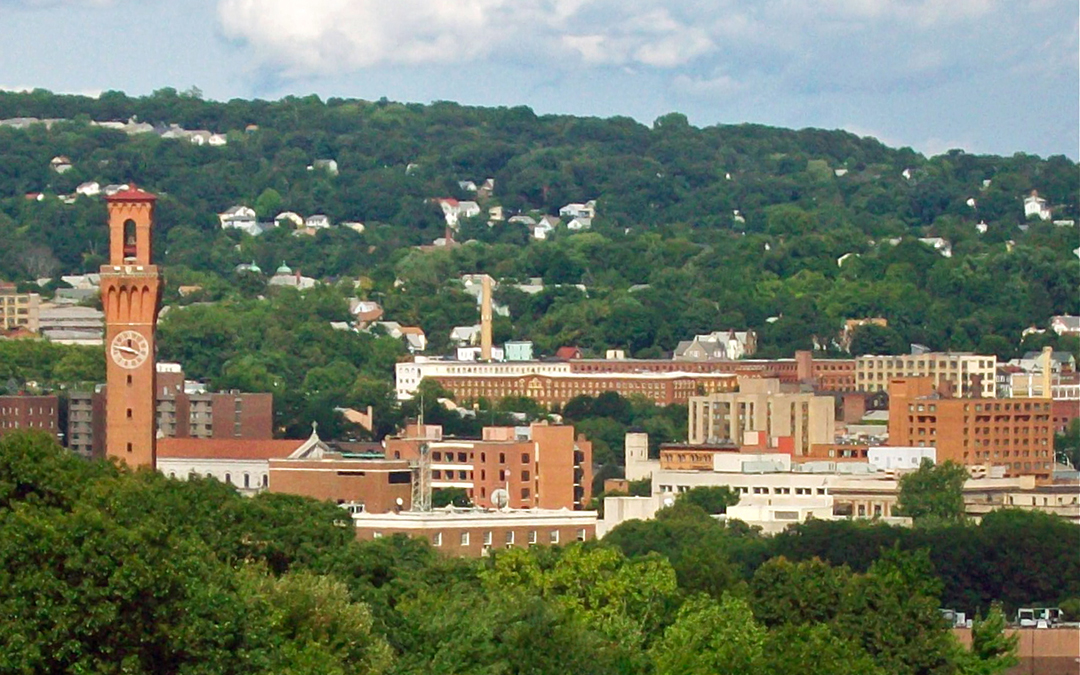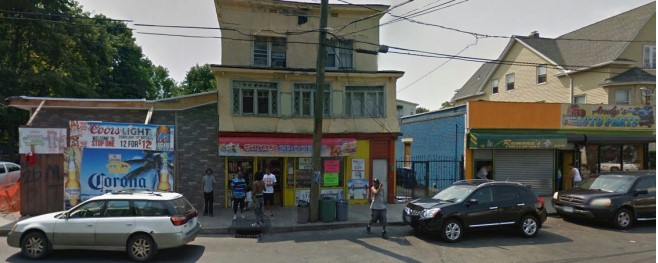
Overview:
UConn Mechanical Engineering students restore the historic Keney Memorial Clock Tower in Hartford as a senior design project.
The students were able to restore the clock tower over the course of one year. Students were able to do so without a schematic, seeing as there are no designs and many of the clock tower's parts are too old to identify or no longer used in present-day engineering.
Today, the Keney Clock Tower is fully functioning and stands as an example of ingenuity and dedication to the Hartford community.
Project Goals:
Restore the non-functional Keney Clock Tower to its former glory and assist in the preservation of this historic landmark.
“It was difficult because they weren’t there...when we got there, there was just a bunch of missing components that we had to design from scratch.”
-Garrett Murphy
“The whole task was a bit daunting. There were a lot of pieces that were gone completely. A lot of things that were broken. We weren’t entirely sure how everything worked."
-UConn student Henry Courchaine.
In the Fall of 2018 four students were selected to work on the restoration of the Keney Memorial Clock Tower for a full year, engineering senior design project. The City of Hartford, Friends of Keney Park, and Keney Park Sustainability Project all being partners on this project. The project goals were to restore the clock mechanisms to be fully operative and once again align the chimes with the time. The students have been successful at identifying the problems and thus, the solutions. Students presented their findings and solutions to partners and are confident the clock tower will be once again operational in time for the end of the academic year. Plans are in the works for a community celebration with date and more specifics to be announced.
The Keney Memorial Clock Tower is located in the North end of Hartford on the corner of Main and Ely streets. Its base is 30 feet (9.1 m) square, and it rises to a height of 130 feet (40 m). It is built out of ashlar-cut red sandstone quarried in Longmeadow, Massachusetts. The tower is heightened by corner buttresses, and pinnacles that rise above its roof to finial crosses. There are clock faces on all four sides, above which are lancet-arched louvers around the chamber housing chiming bells that sound every quarter hour.[2]
The tower was built in 1898 on land that belonged at the time to the locally prominent Keney family. Its construction was done by the family under the terms of the will of Henry Keney, who sought to memorialize his wholesale grocery business, H. & W. Keney. The family, however, instead placed a plaque on the tower reading "This tower erected to the memory of my mother is designed to preserve from other occupancy the ground sacred to me as her home and to stand in perpetual honor to the wisdom, goodness and womanly nobility of her to whose guidance I owe my success in life and its chief joy ~ Henry Keney".[2] The tower was designed by New York City architect Charles C. Haight, whose specialty was Collegiate Gothic architecture. The family trust deeded the tower and park to the city in 1924.[2]
See also[edit]
National Register of Historic Places listings in Hartford, Connecticut
References[edit]
- ^ Jump up to:a b National Park Service (2010-07-09). "National Register Information System". National Register of Historic Places. National Park Service.
- ^ Jump up to:a b c "NRHP nomination for Keney Tower". National Park Service. Retrieved 2017-06-29.

